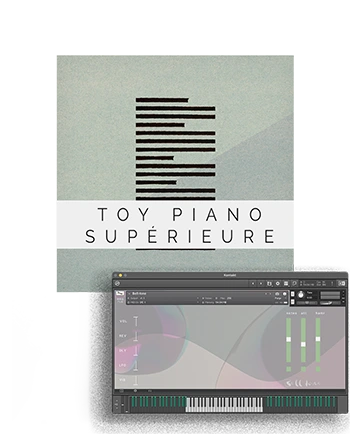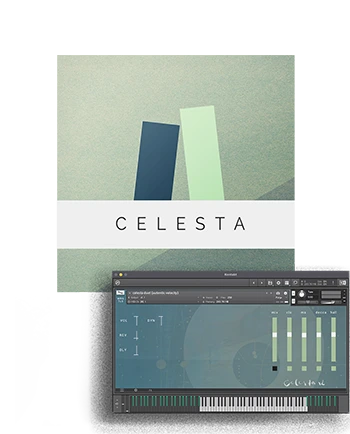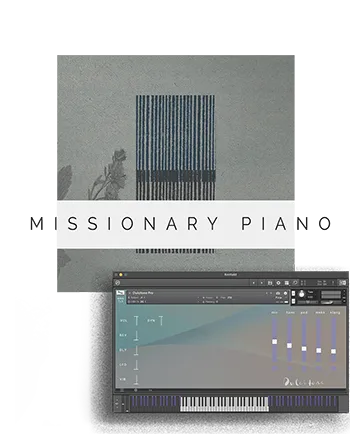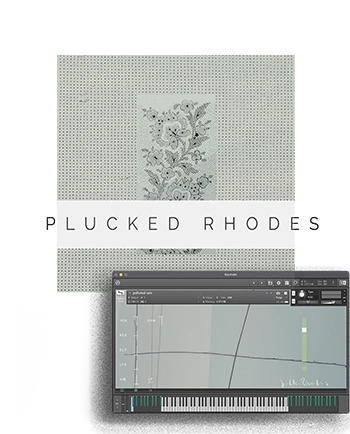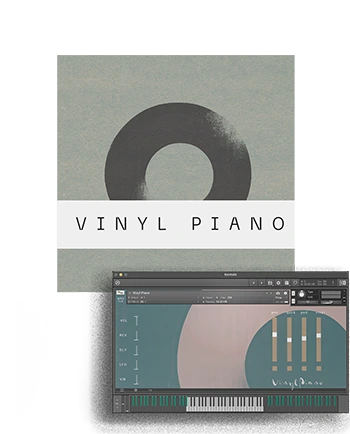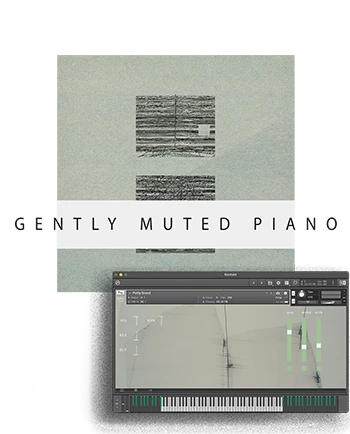- No products in the cart.
SUMMER SALE IS LIVE ::: ENTER CODE SUNSHINE40 AT CHECKOUT, AND YOU’LL GET 40% OFF !
DULCITONE PRO

Dulcitone sounds like an elderly celesta, with a quieter and rounder tone. We sampled two different Dulcitones with different piano hammers and different mallets.
€39Add to cart
Get Dulcitone-Pro

Patches
44 + 25
Variations
24
Samples
1500
Size
3.3 GB
Current Version
2.0
The Dulcitone sounds like an elderly celesta, with a quieter and rounder tone. We sampled two different Dulcitones with different piano hammers.


The sound comes from tuning forks, which vibrate when struck by felt-covered hammers. We utilized a variation of different hammers.
Here’s the playful Grieg Op 43 No 17 (Op.43-1) Butterfly, rearranged for Dulcitone Pro.


Dulcitone-Pro is a charming celesta-sounding alternative to piano.

SPECS :
- Recorded with different piano-hammers
Key sounds, mechanics and quirks on separate faders
Instruments variations and unlimited sculptering
High-end microphones (Neumann, Coles)
Recorded in a dry scoring stage
Articulation ‘hammer’ switcher by ks or cc
Adjustable custom ir reverb
The instrument was overhauled by a piano restorer prior to the sampling session. Mechanics and pedal, squeaks and keysounds were recorded and mapped to individual tracks.
A hodge-podge of contemplating inspirations
Vintage keyboard instrument from the 19th century
Sampled with new sets of hammers
Tracks are equipped with channel-strips controls.
Optional self-playing [FX]s. Imagine sliding your fingers through a curtain of small threads with bells.
€39Add to cart
A comprehensive selection of variations is included.

“Such a lovely sound, expressive, subtle and complex simultaneously.” -KgDrum
“Wrongtools has done it again!” -Niah
“sound fantastic! Congratulations @wrongtools ! Very inspirational” -Emilio
“Pure Magic!” – Vi-C (W.F)
Pure sonic poetry. The tone is warm and inspiring, perfect for creating a sense of intimacy and wonder. – J.S
“a great alternative to the typical celesta or Rhodes sound” M.K
PATCHES:
PATCH LIST
PATCHES:
_
PATCH LIST
- • Dulcitone Pro
- • Dulcitone Felt Hammers
- • Rubber Ball Mallet Big
- • Rubber Ball Mallet Small
- • Gliss Over Tuning Forks
- • Gls Gliss Fx Magic 1
- • Gls Gliss Fx Magic 2
- • Knitting Needle
- • Another Bright Visitor
- • Broken Meteoritt
- • Do You Wonder About This Society
- • Ice Crystalising
- • Lone Tree
- • Lunar Dusk
- • Psalm
- • Secret Wish
- • Silver Overture
- • Summer Of Fog
- • The Ninth Generation
- • Carillionish
- • Clair De Lune
- • Fx Light Blue
- • I’ll Be Drinking When I Bury You
- • Receptor Glock
- • Reflection
- • Safe At Home
- • Shy Tone Blossoms
- • Skrammel
- • Slaughter And Disembowel
- • The Loner
- • Butterfly Wings
- • Deep
- • Golden Years
- • Of Dulcitone
- • Spring Peak
- • Stankelbein
- • This Time
- • Bright Pluck
- • Drug War
- • October Bass
- • Tines
- • Trinity
- • Will To Power
• PLUS MORE VARIATION PATCHES
FAQ :
Frequently Asked Questions
The Dulcitone is a keyboard instrument invented by Thomas Machell of Glasgow, Scotland, in the 1860s. Classified as an idiophone with percussion plaques (similar to a metallophone), it’s often referred to as a “tuning fork piano.” Its sound is produced by felt-covered hammers striking a series of tuned steel tuning forks, which then resonate through a spruce or pine soundboard. The instrument was manufactured by Machell’s firm, Thomas Machell & Sons, from the 1880s until the late 1920s or early 1930s.
The Dulcitone Pro library for Kontakt is the most comprehensive sample collection of this instrument.
The Dulcitone’s mechanism is a simplified version of a grand piano’s “down-striking” action, with the hammers positioned above the tuning forks. When a key is pressed, it activates a hammer, which strikes a tuning fork. The tuning forks are U-shaped pieces of metal, varying in length to produce different pitches. The instrument’s action includes a damper system; pressing a key lifts a damper from the tuning fork, allowing the note to sustain. A sustain pedal, attached to one of the front legs, lifts all the dampers simultaneously. The forks are acoustically coupled to a soundboard, which amplifies the sound. The instrument’s internal construction is primarily wood, with keys often made of ivory and ebony.
With the Kontakt library Dulcitone Pro, musicians and composers finally have access to the most comprehensive and sonically rich sample library of this unique instrument. Every key has been recorded with a variety of velocities and round robins, ensuring a lifelike performance. The inclusion of subtle mechanical noises and room ambience further immerses the user in the authentic experience of playing a real dulcitone.
The Dulcitone is known for its quiet, soft, and mellow sound. The sound is also said to have a “woody, clonky glockenspiel/celesta” quality. Its limited volume made it suitable for intimate settings, such as homes and small churches, but it was often too quiet for larger concert halls. Which makes it a perfect project for deep sampling for Kontakt. The Dulcitone Pro Kontakt library stands as the most thorough and detailed sampling of its kind.
Yes, the Dulcitone is considered an ancestor of the celesta, which uses metal plates instead of tuning forks, and the Rhodes piano, which also uses hammer-struck pronged forks, but is an electric instrument intended for amplification. The Dulcitone was developed around the same time as the Typophone, another tuning-fork instrument invented by Victor Mustel.
Wrongtools also has released a celesta sample library featuring two celestas.
Dulcitones came in various models, primarily distinguished by their size and range. In 1911, three versions were available:
Style B: 3½ octaves in mahogany or oak.
Style R: 4 octaves in mahogany or oak.
Style F: 5 octaves in mahogany or oak.
The most common range is five octaves (61 notes), spanning from A3 to A8. The instrument’s construction varied over the years, with early models cased in oak and later versions, possibly redesigned by Machell’s sons, having a different design. Some later models also featured a quieter action suspended on a system of leaf springs.
Estimates suggest between 2,000 and 6,000 Dulcitones were manufactured.
A standard 5-octave Dulcitone typically has dimensions of around 32″ x 15″ x 12″ and weighs about 27 kg (60 lbs). A significant feature of the instrument is its portability. Its lightweight, compact design and the fact that its tuning forks are not prone to going out of tune made it an ideal alternative to the heavier and more delicate acoustic piano. Many models had foldable legs, further enhancing their portability.
The Dulcitone was originally marketed to a specific customer base: missionaries. They needed a portable, low-maintenance keyboard instrument to bring with them to remote areas for church services. It also found use in homes for quiet, domestic music. Composers such as Vincent d’Indy (Song of the Bells, 1888) and Percy Grainger (“The Power of Rome and the Christian Heart,” 1943) scored for the instrument, although Tchaikovsky famously considered it for The Nutcracker but ultimately opted for the louder celesta. More recently, musicians like David Rhodes and Jon Brion have used it in their recordings and film scores.
Yes. We’ve recorded multiple velocity layers and round robins to capture the subtle nuances of this historical instrument. The library includes different hammer strikes and key release samples to ensure a realistic and expressive playing experience. We have also captured the natural resonance and mechanical sounds of the instrument to preserve its authenticity.
When it comes to sampling the dulcitone, the Kontakt library Dulcitone Pro is in a class of its own. The library was recorded with new sets piano-felt hammers, and soft rubberball- mallets, and different mallets carefully hit each of the tines. We recorded a range of velocity layers and round robins to ensure that the subtle dynamic variations and unique character of the instrument were preserved in the library.
The Dulcitone’s delicate and mysterious tone makes it perfect for a variety of genres. It’s an excellent choice for cinematic scoring, ambient music, folk, and experimental compositions. It can provide a nostalgic or vintage texture to your tracks and is particularly effective for creating a sense of intimacy or wonder. Composers like Jon Brion have famously used the instrument for its unique character.
DulcitonePro requires the full version of Full Retail Version of Kontakt 6.4.2 [or later]. It will not run in the free Kontakt Player. If you’re unsure about compatibility, see our general Kontakt compatibility guide.
It will take up 3.3 GB of free diskspace
CURRENT VERSION
v 2.0
- added 25 new patches,
- repaired round-robin (important fix!)
v.1.1 various bugs and fixes.
(build. v193 sculpt 0009)
—
v1.0 initial release
€39Add to cart
‘Piano’ Sample Libraries
Acoustic Keyboards
-
Bell-tone piano
€29 -
Celesta Duet
€29 -
Dulcitone Pro
€39 -
The Silk Rhodes
€29 -
Vinyl Piano
€49 -
Putty Grand
€78



